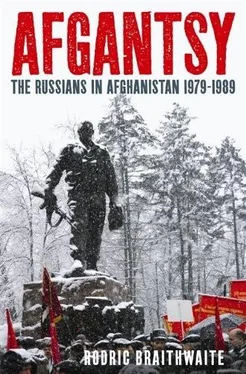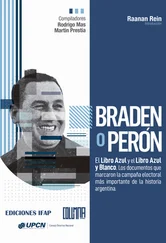Khalq drew its supporters from the countryside and the Pushtun tribes. Its leaders were Nur Mohamed Taraki and Hafizullah Amin. Taraki learned English while working as a clerk in Bombay as a young man and studied political economy at Kabul University. Amin also studied at Kabul University, spent some time at Columbia University in New York as a postgraduate, and on his return worked as a teacher.
There was some theoretical basis for the division between the factions. Both believed in the goal of a socialist Afghanistan. But the adherents of Parcham thought that Afghanistan was not yet ripe for socialism. That target would have to be achieved gradually, in alliance at least at first with other nationalist and progressive forces. Khalq thought, on the contrary, that the urgent task was to seize power by force. Thereafter socialism could be imposed on Afghanistan in short order, using the methods that Stalin and Mao had applied so successfully in their own backward countries.
Each faction set up its own organisation to work among the military. In 1974 Colonel Kadyr, who had played a significant role in getting rid of the King the previous year and was a firm supporter of Khalq, set up a secret United Front of Afghan Communists within the army, where Khalq became a significant covert force.
Because the Soviet government valued its relationship with the Daud government, the Ambassador and the Chief Soviet Military Adviser were instructed to have no dealings with the PDPA leaders. Relations with them were conducted instead through the KGB representative in Kabul. In January 1974 he was instructed to see Taraki and Karmal separately, and express the Soviet government’s ‘deep alarm’ about the continuing mutual fighting between the leadership of Parcham and Khalq. This, he was told to say, only played into the hands of domestic and foreign enemies. The PDPA should instead ‘combine their efforts at giving comprehensive aid to the republican regime’ of President Daud. 6
Daud himself was worried about the intrigues of the PDPA within the army and the bureaucracy. In April 1977 he told the Russians that he was concerned ‘about information given him by security agencies of plans supposedly hatched by leftist forces to remove him from power. He stepped up the arrest of activists on left and right, who were incarcerated in the notorious Pul-i Charkhi prison on the eastern outskirts of Kabul. This had been built by Germans according to a Czech design. It was in the form of a ‘snowdrop’: there were eight blocks radiating out like spokes from the centre. The ends of the spokes were joined in a circle by a stone wall. There were guard towers where the spokes joined the wall. From the air the prison looked like the wheel of a wagon. The roofs of the spokes were covered with copper sheeting, which glowed in the evening light with a bloody colour. The prison was guarded by a battalion of three hundred soldiers and four tanks. Executions were carried out in a small square in the central part of the prison; the victims were shot lying face down on the ground, so there were no traces of bullets on the walls. Built to hold five thousand prisoners, by the time of the Soviet invasion it was holding at least twelve thousand. 7
Under continued Russian pressure, the two factions of the PDPA eventually agreed to reunite. In July 1977 they met in Jalalabad, their first joint meeting in ten years. They elected a new Central Committee and Politburo, and appointed Taraki as their General Secretary and Babrak Karmal as Taraki’s deputy. But the candidacy of the other leading Khalq leader, Amin, was contested. Some of his opponents accused him of having had links with the CIA while he was studying in New York. He replied that he was short of money at the time and that he had merely been stringing the CIA along. The Russians got hold of a transcript of the meeting. 8They made much of the accusation when they decided to move against Amin two years later.
Daud’s worries were perfectly justified. By now the PDPA were indeed plotting a coup: Colonel Kadyr was one of the main advocates. On 17 April Mir Akbar Khaibar, a leading ideologist from Parcham, was murdered in suspicious circumstances—some said by the government, others that it was a provocation by Amin. Either way, this was the trigger. Khaibar’s funeral became the occasion for a massive demonstration by tens of thousands of people. The demonstration was roughly put down by the police. Daud ordered the arrest of a number of leaders of the PDPA. Taraki, Karmal, and others were taken in on the night of 25 April. Amin avoided arrest for long enough to pass the signal for a coup to his people in the army through Mohamed Gulabzoi, a young air-force lieutenant who figured largely in the politics leading up to the Soviet invasion and for many years thereafter.
The Communists Take Power
The Khalqists in the army acted the next day. The first to move was the 4th Tank Brigade, which was stationed by the Pul-i Charkhi prison. The brigade was commanded by an officer fiercely loyal to Daud. But the Chief of Staff, Mohamed Rafi, and two of the battalion commanders, Mohamed Aslam Watanjar and Shirjan Masduriar, were key members of the PDPA and central to the plot. Watanjar persuaded his commander that in view of the unrest in the city his ten tanks should be armed, so that they could go to support Daud if necessary.
At about midday the first column of tanks arrived outside the Arg, the presidential palace in the centre of the city. It was constructed like a fortress and guarded by two thousand soldiers with tanks. Watanjar ordered the first shell to be fired at the palace at twelve o’clock exactly. Daud was holding a cabinet meeting. He told his ministers to save their lives and leave. The ministers of Defence and Internal Affairs slipped out the back to organise resistance. But troops loyal to the Khalq were already seizing key points throughout the city and by evening the 4th Brigade had been joined by commando units. Troops loyal to Daud were neutralised, the arrested PDPA leaders were liberated, and aircraft from the base at Bagram began bombing the palace.
The large Soviet Embassy on the southern edge of the city was caught in the crossfire. The women and children were safely shepherded into the cellars, even though bullets were already flying around the embassy compound, where one anti-tank shell hit a tree. But no one was hurt. 9
That evening a group of commandos broke into the palace and demanded that Daud lay down his arms. Daud shot and wounded their commander. In the ensuing firefight—or, according to some reports, cold-bloodedly after the fight was over—Daud and all the members of his family were killed. The Minister of Defence was killed when the division he was leading into the city to oppose the insurgents was dive-bombed. After a good deal of further fighting elsewhere in Kabul, resistance had ceased by the following morning. Power passed to the PDPA at the cost of forty-three dead among the military and others among the civilian population. One of those wounded was Mohamed Gulabzoi. It was the bloodiest so far of the twentieth-century changes of power in Afghanistan.
Though the Soviets have been accused of standing behind the coup, it is not clear how much if anything they knew about it. Despite their worries about Daud’s flirtations with the West, the Soviets’ policy of friendship with the Afghan government currently in power had paid off in the past, and there was no particular reason to assume that it could not be satisfactorily managed in the future. The coup came like a bolt from the blue to Soviet officials in Kabul, including the KGB representative. The PDPA leaders had neither informed nor consulted them, since they believed that their plans would not be approved by Moscow. 10Brezhnev’s diplomatic adviser, Andrei Aleksandrov-Agentov, later claimed later that Brezhnev had learned of the coup through foreign press reports. General Gorelov, the Chief Soviet Military Adviser, said that the first he knew of the coup was when he came into his Kabul office that morning, heard shooting, and rang the Soviet adviser with the 4th Tank Brigade to ask what was going on. 11Others say that the KGB had been working with people in the PDPA to bring about a coup, but had assumed it would not take place until August. It may be that, once again, the Soviet right hand did not know what the left hand was up to. In the end it did not matter much. Once the coup had taken place, the Soviet government had little choice but to give the new Communist government their full support.
Читать дальше












